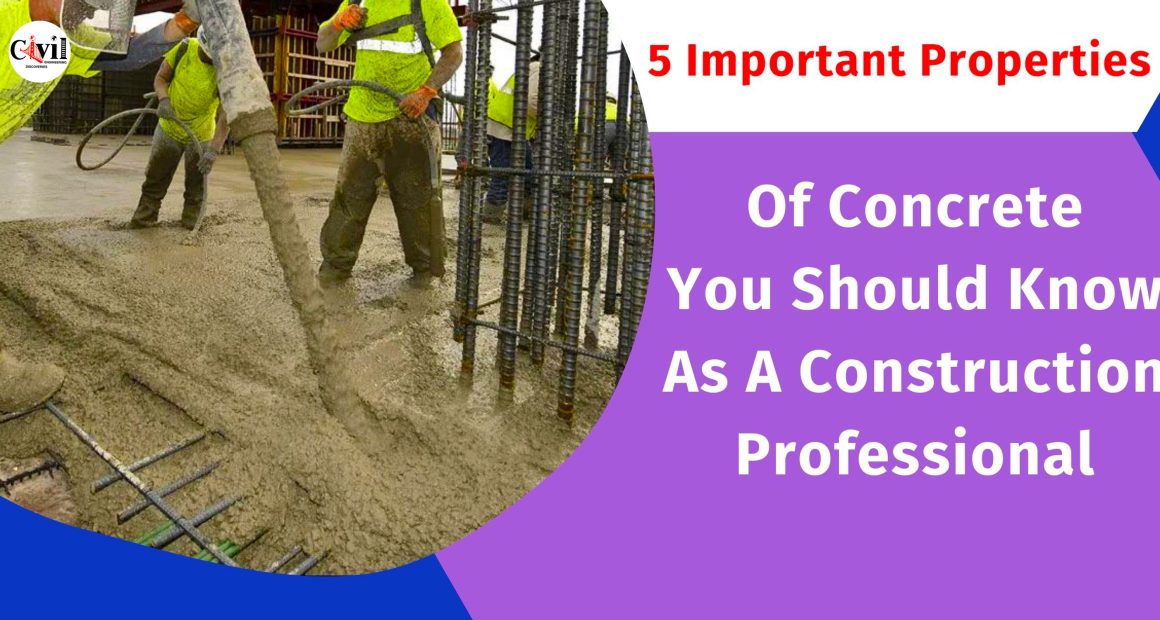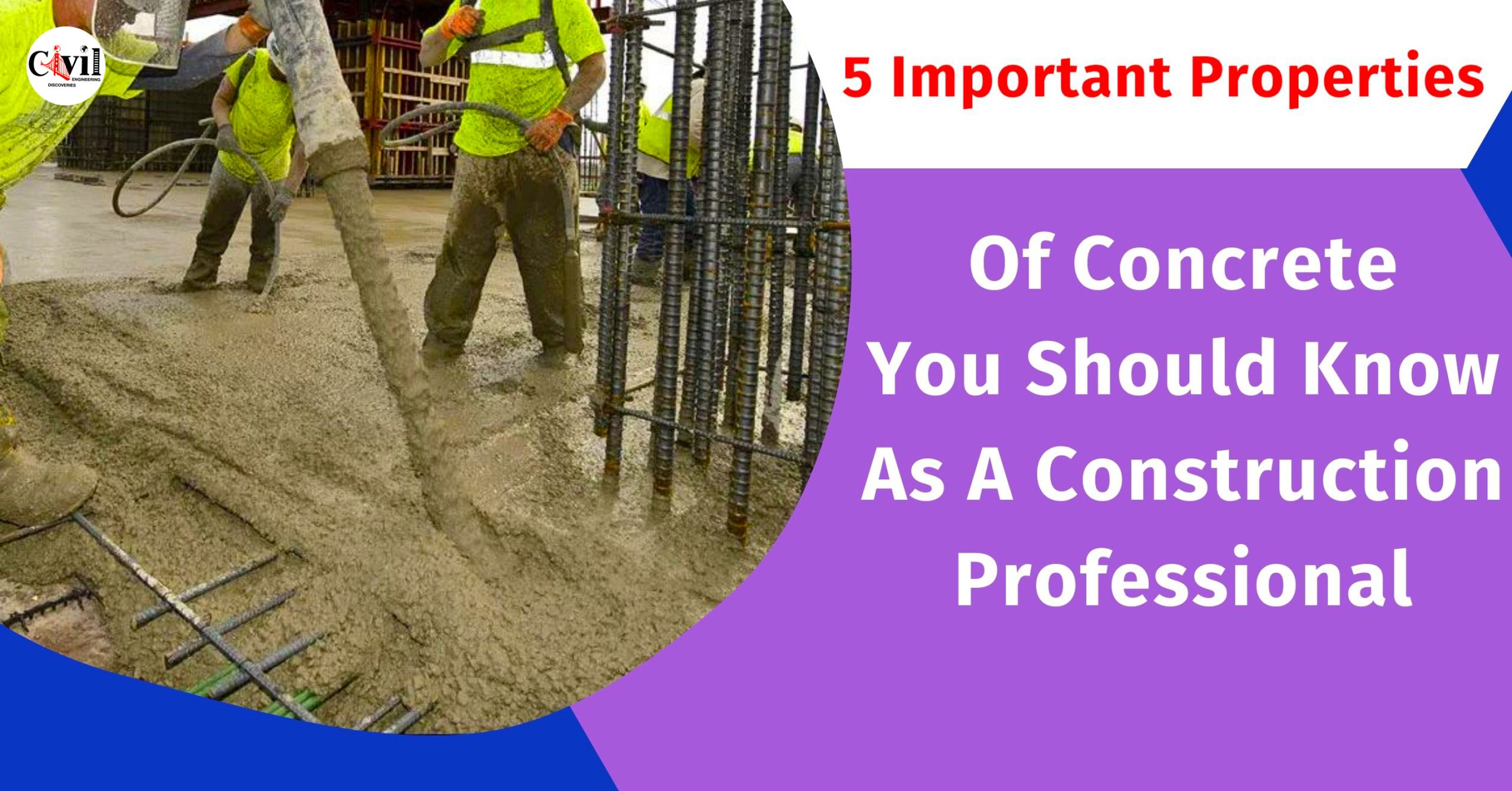As a construction professional, understanding the properties of concrete is crucial for creating durable and reliable structures. Let’s delve into the five essential properties of concrete:
- Strength of Concrete:
- Compressive strength is the most critical property of concrete. It represents the maximum axial compressive stress a cylindrical concrete sample can withstand before failing. Typically, the tensile strength of concrete is neglected, as concrete is weak in tension. Concrete is incredibly strong in compression, meaning it can withstand a lot of force pushing down on it. This is why concrete is such a popular material for foundations, walls, and beams.
- Other strengths include:
- Tensile strength: Approximately 10% of the compressive strength.
- Bending strength: Roughly 15% of the compressive strength.
- Shear strength: Approximately 20% of the uniaxial compressive strength.
- To determine concrete strength, various tests are conducted, such as compression tests, flexure tests, and split tensile strength tests. The compression test is the most common, where specimens are crushed to calculate the compressive strength.
- Other strengths include:
- Compressive strength is the most critical property of concrete. It represents the maximum axial compressive stress a cylindrical concrete sample can withstand before failing. Typically, the tensile strength of concrete is neglected, as concrete is weak in tension. Concrete is incredibly strong in compression, meaning it can withstand a lot of force pushing down on it. This is why concrete is such a popular material for foundations, walls, and beams.
- Workability:
- Concrete’s workability allows us to shape it easily and achieve a smooth finish. The water-cement ratio significantly influences workability.
- Theoretically, a water-cement ratio of 0.4 is sufficient for cement hydration and maximum strength. However, proper compaction is essential for optimal concrete strength, which may require adjusting the water content.
- Durability:
- Concrete’s durability enables it to resist weathering, chemical attack, abrasion, and other forms of deterioration.
- Proper mix design, curing, and protection against aggressive environments contribute to concrete’s long-term durability.
- Creep:
- Creep is a property of hardened concrete. Over time, under sustained load, concrete gradually deforms.
- Engineers consider creep when designing structures to ensure long-term stability.
- Shrinkage:
- Concrete experiences shrinkage due to drying and chemical reactions during hydration.
- Proper curing and mix design help minimize shrinkage cracks in concrete structures1.
Remember, mastering these properties empowers you to create defect-free concrete structures that stand the test of time!






